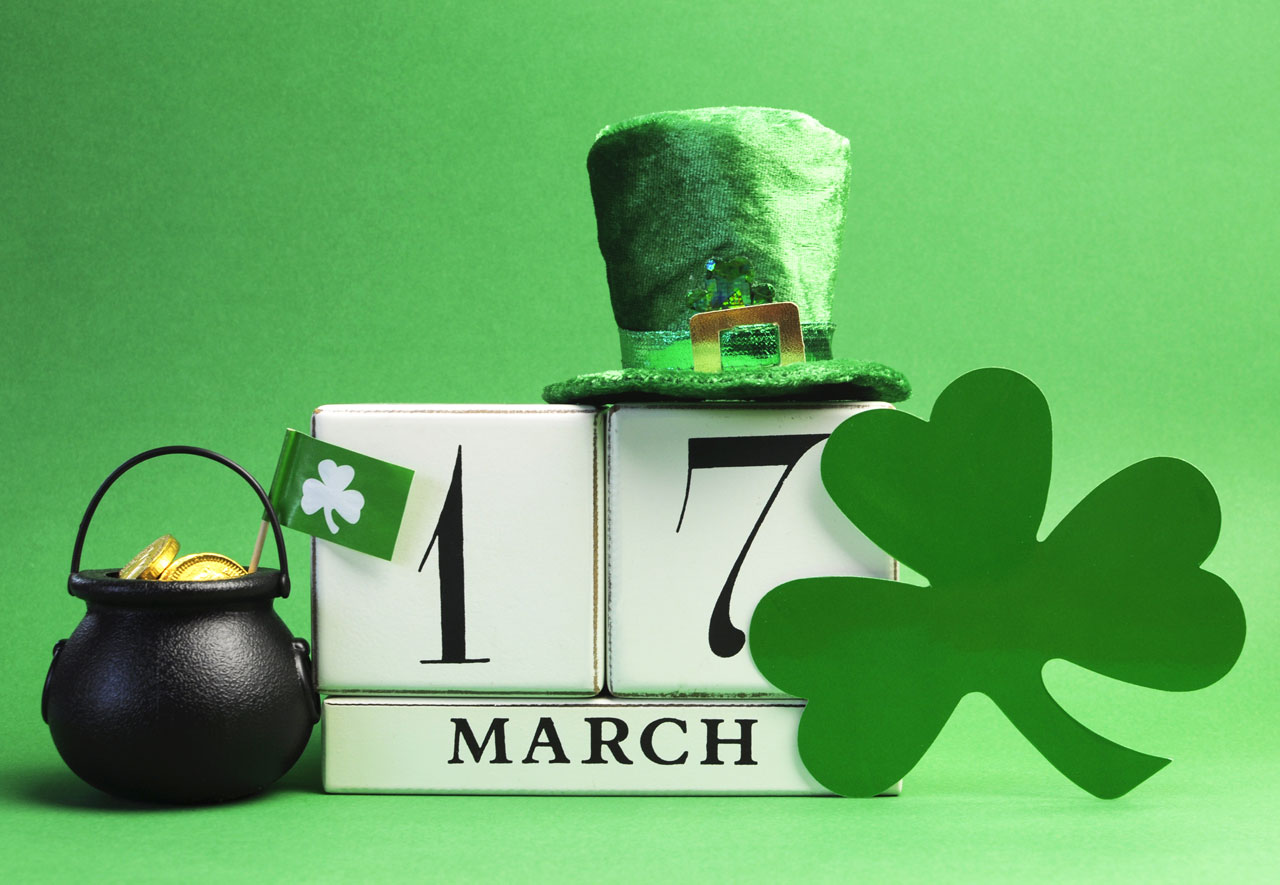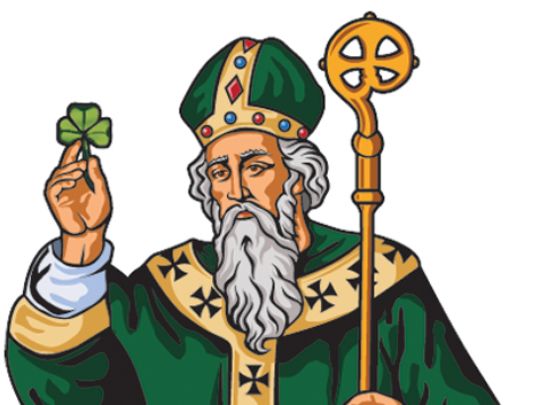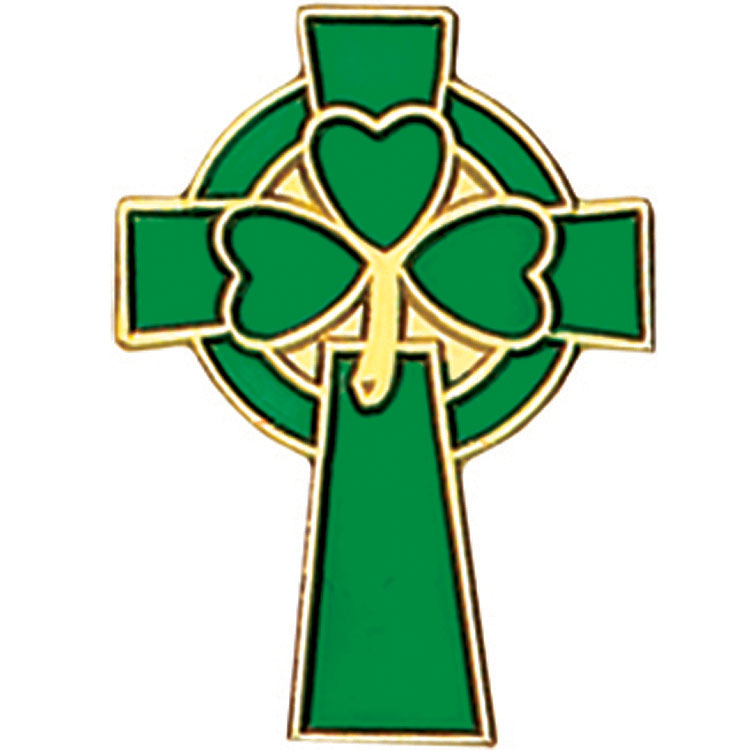
A Short History of St. Patrick – The Storage Inn Blog
The Short History of Saint Patrick
It’s St. Patrick’s Day here at The Storage Inn in Egg Harbor Township New Jersey, and the employees, and storage space renters alike are in a ”Luck o’ the Irish” mood! I’ve even had one couple stop into the front office dressed from head to toe in green. ”Happy St. Patty’s Day” they exclaimed – “Erin go bragh!” I replied! That got me wondering about the origins of St. Patrick’s Day, so I decided to ask my “most Irish-looking” customers what they knew about Saint Patrick. It turns out that Sean, the husband, is not only Irish, but a history teacher too. “Well” he said, “for starters St. Patrick was neither Irish, nor a Saint. What???? – Did he at least invent green beer?!? No – he did not, but here is what he did do…
Patrick, whom almost everyone calls “Saint Patrick,” was never canonized by the Catholic Church, and was born to a wealthy family in 387 AD in  Kilpatrick, Scotland. His real name was Maewyn Succat. It was his extensive missionary work in Ireland for which Patrick is famous. Patrick, at age sixteen, was captured by Irish raiders and spent several years as a slave in Ireland. It was during this time that he learned the various rituals, customs, and language of Druids, and it was these people that he eventually converted to Christianity. Patrick supposedly had a dream in which God spoke to him, saying, “Your ship is ready.” Patrick was then able to escape Ireland by ship. Shortly thereafter, he experienced another dream in which he received a letter that was labeled the “Voice of the Irish.” When he opened it, he heard the voices of all those whom he had met in Ireland begging him to return.
Kilpatrick, Scotland. His real name was Maewyn Succat. It was his extensive missionary work in Ireland for which Patrick is famous. Patrick, at age sixteen, was captured by Irish raiders and spent several years as a slave in Ireland. It was during this time that he learned the various rituals, customs, and language of Druids, and it was these people that he eventually converted to Christianity. Patrick supposedly had a dream in which God spoke to him, saying, “Your ship is ready.” Patrick was then able to escape Ireland by ship. Shortly thereafter, he experienced another dream in which he received a letter that was labeled the “Voice of the Irish.” When he opened it, he heard the voices of all those whom he had met in Ireland begging him to return.
Patrick returned to Ireland to tell people about Christianity. Though the task was difficult and dangerous, he persisted and was able to build a  strong foundation for conversion. The Irish people were receptive to his teachings, especially in light of the fact that he was able to take several of their Celtic symbols and “Christianize” them. The most well-known of Patrick’s illustrations is the shamrock, a certain type of clover sacred to the Druids, which he used as a symbol of the Trinity. During his thirty years of work there, he supposedly converted over 135,000 people, established 300 churches, and consecrated 350 bishops. Patrick died on March 17, 461. For over a millennium, the Irish have celebrated St. Patrick’s Day on March 17..
strong foundation for conversion. The Irish people were receptive to his teachings, especially in light of the fact that he was able to take several of their Celtic symbols and “Christianize” them. The most well-known of Patrick’s illustrations is the shamrock, a certain type of clover sacred to the Druids, which he used as a symbol of the Trinity. During his thirty years of work there, he supposedly converted over 135,000 people, established 300 churches, and consecrated 350 bishops. Patrick died on March 17, 461. For over a millennium, the Irish have celebrated St. Patrick’s Day on March 17..
Each year millions of people celebrate St. Patrick’s Day. It’s a national holiday in Ireland where people do not work, but worship and gather with family. In the United States, the first St. Patrick’s Day parade was held in New York on March 17, 1762. It consisted largely of Irish soldiers. Today, St. Patrick’s Day is celebrated by wearing green, which symbolizes spring as well as Irish culture.
I thanked Sean and Erin for their brief, but insightful history lesson, and watched as they made their way back to their storage unit, presumably to retrieve some supplies for tonight’s St. Patrick’s Day festivities or maybe they were getting a jump on spring by pulling out St. Patrick’s favorite item to put into a storage unit… Paddy O’Furniture!! Is it time for that green beer yet? – Cheers!



 If it’s summer, pack your winter clothes. Pack all your extra belongings such as decorative items and knick-knacks. Box up extra toiletries as well as kitchen utensils, pots and pans, etc. Use only the bare essentials for the last few days.
If it’s summer, pack your winter clothes. Pack all your extra belongings such as decorative items and knick-knacks. Box up extra toiletries as well as kitchen utensils, pots and pans, etc. Use only the bare essentials for the last few days. Use unprinted packing paper (newspaper can stain your items), or bubble wrap to wrap and cushion household goods, especially delicate items.
Use unprinted packing paper (newspaper can stain your items), or bubble wrap to wrap and cushion household goods, especially delicate items. 